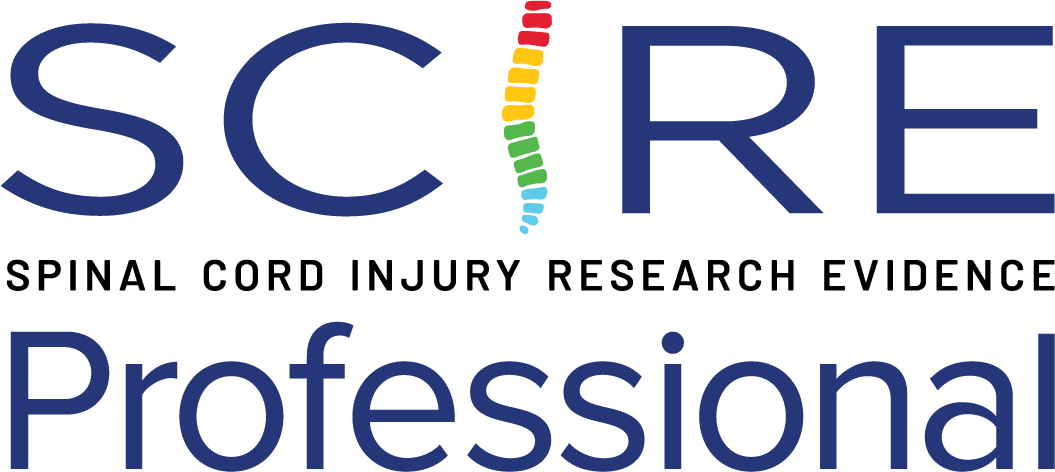Measurement Property Summary
Number of studies reporting psychometric properties: 1
Interpretability
- Total FIM-SR scores range from 18 (total dependence) to 126 (total independence).
- The higher the FIM score, the fewer care hours required upon discharge.
- No normative data has been established for the SCI population.
- Published data for the SCI population is available for comparison (see Interpretability section of the Study Details sheet)
- MCID not established in SCI population
- SEM and MDC:
SEM and MDC for total FIM-SR and subscales (calculated from data in Masedo et al. 2005):
| Variable |
SEM |
MDC |
| Self-care |
4.03 |
11.2 |
| Sphincter |
1.45 |
4.02 |
| Mobility |
2.51 |
6.96 |
| Locomotion |
1.59 |
4.41 |
| Communication |
0.49 |
1.35 |
| Social cognition |
0.74 |
2.04 |
| Motor |
7.67 |
21.2 |
| Cognitive |
0.93 |
2.56 |
| Total |
8.05 |
22.30 |
(Masedo et al. 2005; n=84; 67 males; mean age: 42 years; 54% cervical, 38% thoracic, 7% lumbar/sacral; mean (SD) time since SCI: 8.3 (8.9) years)
Reliability – Moderate to High
- Moderate to High test-retest reliability:
- Total score: r = 0.89
- Items scores: r = 0.54-0.91
- High internal consistency:
- Pre-treatment: Total score α = 0.95, Item score α = 0.14-0.98
- Post-treatment: Total score α = 0.94, Item score α = 0.20-0.98
(Masedo et al. 2005; n=84; 67 males; mean age: 42 years; 54% cervical, 38% thoracic, 7% lumbo/sacral; mean (SD) time since SCI: 8.3 (8.9) years); amitriptyline treatment)
Validity – Low to Moderate
Low to Moderate correlation with CHART:
- CHART total: r = 0.26
- CHART Physical subscale: r = 0.49
- CHART Mobility subscale: r = 0.30
(Masedo et al. 2005; n=84; 67 males; mean age: 42 years; 54% cervical, 38% thoracic, 7% lumbar/sacral; mean (SD) time since SCI: 8.3 (8.9) years)
Responsiveness
Floor/Ceiling Effect
Ceiling effects were detected in both the FIM-SR cognitive subscale (88% subjects reported max score) and the FIM-SR communication and social cognition subscale (76% subjects reported max score).
(Masedo et al. 2005; n=84; 67 males; mean age: 42 years; 54% cervical, 38% thoracic, 7% lumbar/sacral; mean (SD) time since SCI: 8.3 (8.9) years)
Reviewers
Dr. Ben Mortenson, Dr. Carlos L. Cano-Herrera
Date Last Updated
December 31, 2024
